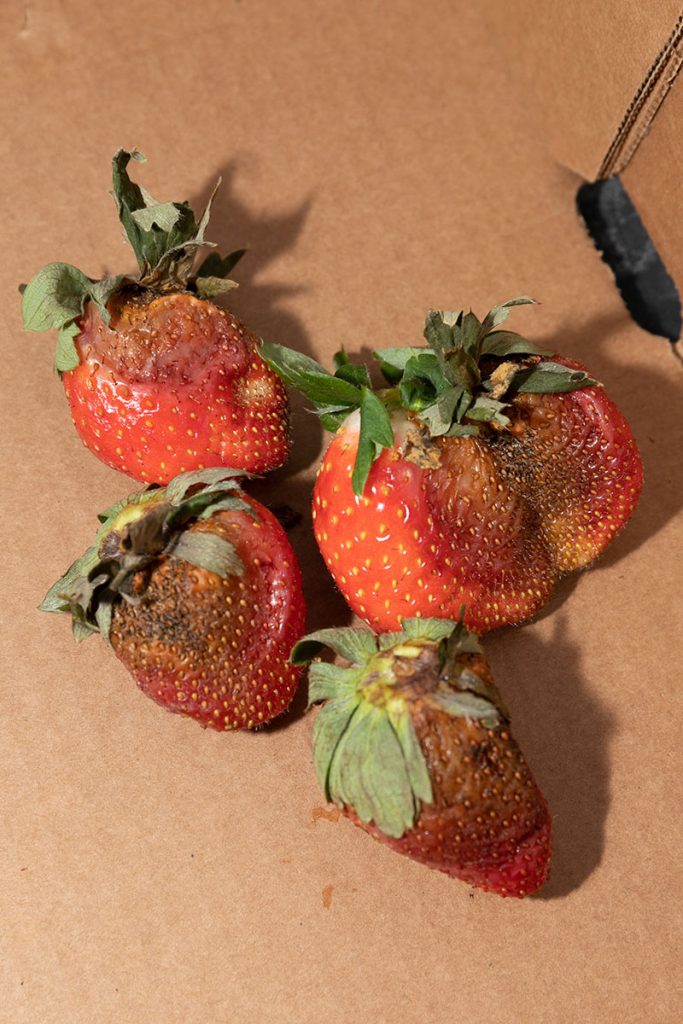By Natalia A. Peres

Photo by UF/IFAS GCREC
Pestalotiopsis is not necessarily new to strawberry. A strawberry fruit rot caused by Pestalotia longisetula (or Pestalotiopsis) was reported for the first timein Florida in 1972. However, the fungus has always been considered a secondary pathogen. But this was not the case during the past two strawberry seasons (2018–19 and 2019–20), when severe outbreaks were reported in Florida commercial fields. Root, crown, petiole, fruit and leaf symptoms were observed. Yield was severely affected, and several acres of strawberry fields were destroyed before the end of the season.
University of Florida Institute of Food and Agricultural Sciences (UF/IFAS) studies indicate that isolates from the recent outbreaks are more aggressive and may belong to a new species of the genus Neopestalotiopsis.
Many growers consider the disease a new threat to strawberry production. Several questions are being asked: Where did this come from? Why is it so aggressive? How does it spread? What are the conditions for the spread? Will it survive in Florida fields? How can it be controlled? UF/IFAS researchers are working hard on trials to understand the new disease and develop best management practices to control it.
SUSCEPTIBILITY AND SPREAD
UF/IFAS studies found the disease apparently originated from other hosts around strawberry nursery fields. Thus, strawberry cultivars do not seem to have any immunity to it, and all cultivars that are currently grown commercially in Florida (Florida Beauty, Florida Brilliance, Florida Radiance and FL127 SensationTM) are susceptible.
The fungus is favored by high temperatures (77 to 86º F) and produces spores on the surface of infected tissues that are spread by water. Extended rainy periods or overcast conditions with prolonged leaf wetness during the strawberry season, such as those that occurred last December, are problematic. To minimize dispersal from field to field, growers are advised to limit their operations (such as harvesting or moving equipment through fields) when plants are wet. Current studies are focusing on sampling other hosts and weeds around Florida strawberry fields during the off-season to determine whether the fungus could become endemic in Florida.
MANAGEMENT METHODS
Growers want to know how to manage the disease, and many different fungicide products have been screened in the laboratory and evaluated in field trials at the UF/IFAS Gulf Coast Research and Education Center (GCREC). In the field trials, the fungicide pre-mix of fludioxonil + cyprodinil (Switch® 62.5 WG) and thiram (Thiram® SC) significantly reduced disease incidence.
Only a few other fungicides that are not currently labeled for strawberry use were somewhat effective. Since the overuse of fungicide products can lead to increased selection for fungicide resistance, applications need to be limited to the maximum the label recommends, and research needs to continue to seek alternatives.
For the upcoming season, growers should closely scout plants arriving from nurseries for leaf spot symptoms. Unfortunately, there are many leaf spot diseases that look alike, so it is important to get the correct diagnosis. If caught early and at low levels, removing the symptomatic plants from the fields is advisable.
The current seasonal forecast is for La Niña, which is known to bring a warmer than normal and dry climate pattern to Florida and the Southeast. The dry weather during La Niña years is usually not conducive to fungal diseases such as pestalotia leaf spot as well as anthracnose and botrytis.









